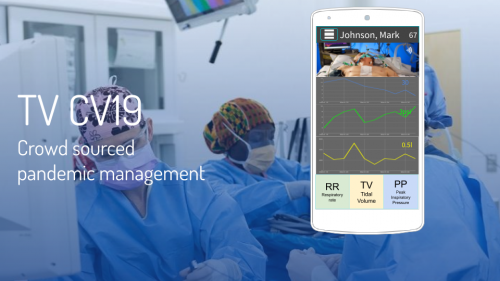
By Joshua Baxt
In the face of COVID-19, many caregivers, engineers and gifted amateurs are stepping up to find ways to support healthcare workers.
To help guide some of these efforts, Michael Barrow, a Ph.D. candidate with Professor Ryan Kastner’s research group in the Computer Science and Engineering Department (CSE) at UC San Diego, is leading an effort to boost critical care management during these uncertain times. Barrow is working closely with Shanglei Liu, MD, a general surgeon at Mayo Clinic and the project’s clinical primary investigator.
The team is also exploring how clinicians can address the potential need to simultaneously ventilate many patients. In addition to CSE and Mayo Clinic, collaborators at MIT, Scuola Superiore Sant' Anna Pisa in Italy and several private companies have joined the project.
Technology to Multiply Expertise
Barrow and his collaborators are primarily focused on helping critical care specialists provide the best possible care, even when resources are stretched thin.
“We can’t 3D-print doctors and nurses,” Barrow said, “however, we can increase their patient care capabilities through 21st century telecommunications.”
The group is developing a telemedicine platform, called TV CV19, designed to enhance hospital-wide communications in a crisis and help medical specialists care for more patients. Clinicians with the most acute care experience can focus on the sickest patients while having a telecommunications conduit to advise their colleagues. This way, technology can multiply expertise. Acute care specialists can’t possibly monitor all patients, but their knowledge can easily be shared with other clinicians.
“It creates an efficient network of communication for clinicians,” said Barrow. “At the top, you have the experts, whose attention is going to be focused on complex decisions for the sickest patients. The platform gives them the ability to selectively allocate their attention where it’s needed most. This empowers front line practitioners of all backgrounds with the real-time expertise on how to care for their critically ill patients. It also reduces exposure to infected individuals to prevent the spread of COVID.”
The goal is to quickly provide key decision-making information, such as vital signs, lung compliance and even a live video feed of patients. With this platform, specialists can view alerts and respond in real time, providing specific tasks for bedside clinicians.
“This way, we can have others monitor the patients who are more or less stable,” said Barrow. “They still need to be ventilated, but their condition isn't changing. This frees up decision-makers to look at the cases where patients really need their expertise right now.”
Evaluating DIY Ventilators

Clinicians may also be forced to grapple with a ventilator shortage as the numbers of patients who need care surge. Some companies are shifting production, from cars for example, to meet the need. But in the short term, open source ventilator-building instructions have appeared on the internet.
Barrow and colleagues analyzed some of these designs and found them wanting. The most common flaw is the lack of precise controls, difficulty adapting to local materials, lengthy building times and overly complex designs. These flaws would make it difficult to use these devices with real patients.
Ventilator control is particularly important. As a patient’s lungs stiffen from coronavirus infection, ventilator pressure must be adjusted to avoid additional damage. The team has developed an experimental universal control system—built with a mobile phone and other off-the-shelf components—which will allow operators to adjust these ventilators and protect patients.
"Right now, we are adapting our universal controller software to support as many makeshift ventilator designs as we can,” Barrow said. “We are also working with our clinical collaborators to improve the usability of our case management interface.”
From there, the group will work to ensure regulatory compliance before potentially delivering their research into the hands of healthcare providers.

